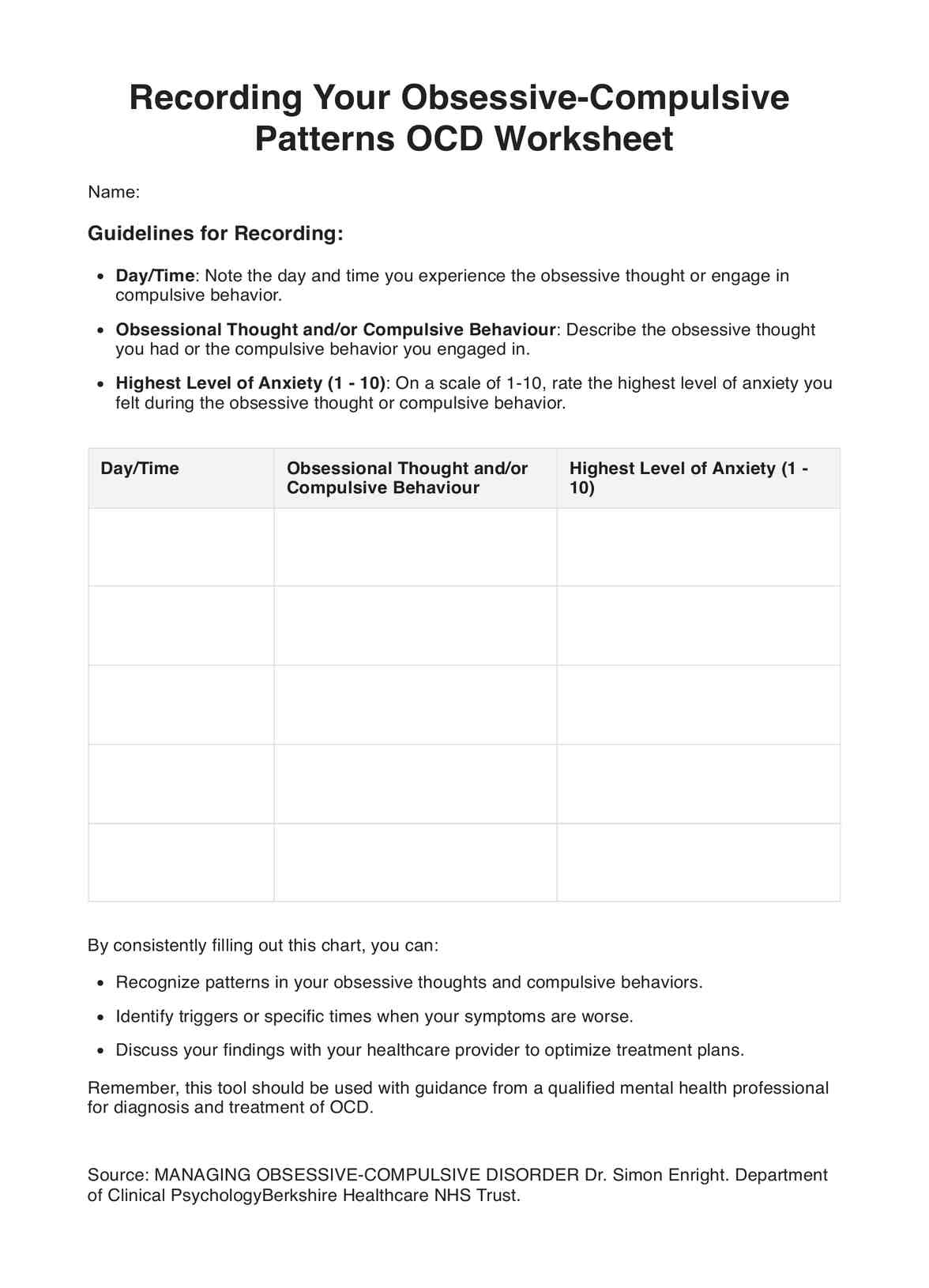It varies depending on the individual, but typically it takes about 15-30 minutes.

Manage OCD effectively with the Recording Your Obsessive-Compulsive Patterns OCD Worksheet. Find triggers, rate distress & track progress for improved health.
It varies depending on the individual, but typically it takes about 15-30 minutes.
The Recording Your Obsessive-Compulsive Patterns OCD Worksheet helps by providing a structured way to identify and manage obsessive-compulsive patterns.
This worksheet is most effective when used at the onset of obsessive thoughts or during moments of high anxiety.
EHR and practice management software
*No credit card required
Free
$0/usd
Unlimited clients
Telehealth
1GB of storage
Client portal text
Automated billing and online payments